What Are Audience Signals in Performance Max?
Audience signals in Google Performance Max (PMax) campaigns are not rigid targeting mechanisms. Instead, they function as intelligent cues that help Google understand the type of users you want to reach. Think of them as a "starting map"—a tool that allows Google’s AI to begin its learning journey from a place of relevance.
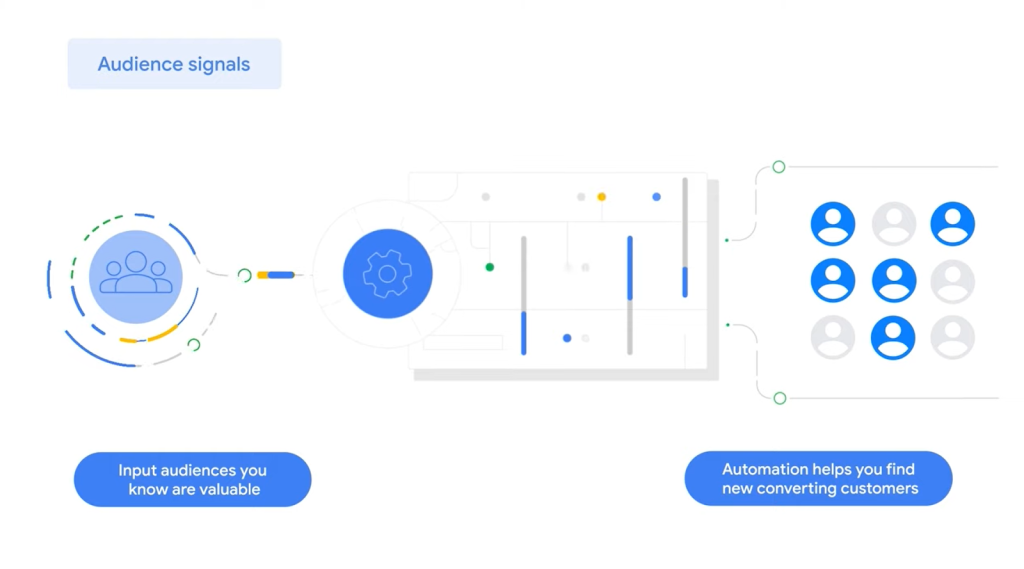
These signals do not limit Google’s automation but rather accelerate its ability to identify and convert high-value customers. As Google gathers insights from your signals, it refines its targeting to include users with similar behaviors and interests. This creates a dynamic advertising environment where performance is consistently optimized.
In practical terms, each asset group within a PMax campaign should be paired with a tailored audience signal. This alignment ensures that your creative messaging and targeting are synchronized, resulting in better engagement and higher conversion rates.
Performance Max Audience Segment Types
Google offers several categories of audience signals, each designed to capture specific types of user intent and behavior.
- Demographics: Include attributes such as age, gender, parental status, household income, and education level. These are essential for refining your reach based on known buyer personas.
- Affinity Audiences: Represent users with strong, long-term interests in specific topics. For example, individuals frequently browsing marketing blogs would fall into a "marketing enthusiasts" affinity category.
- In-Market Audiences: Focus on users actively researching or considering a purchase in a relevant product category. This audience segment captures intent and helps improve conversion rates.
- Life Events: Target users undergoing significant life changes, such as getting married, buying a home, or starting a new job. These changes often signal a shift in purchasing behavior.
- Custom Segments: Allow advertisers to create audience lists based on recent search activity, URLs visited, and app interactions. This level of customization provides highly specific targeting opportunities.
Advantages of Using Audience Signals in Performance Max
Utilizing audience signals strategically enables marketers to guide campaign performance from day one.
- Faster Optimization: Audience signals give Google's algorithm a head start, allowing it to learn and adapt more efficiently from a known baseline.
- Smarter Budget Allocation: Google prioritizes high-performing audience segments, ensuring ad spend is directed toward users most likely to convert.
- Enhanced Ad Relevance: Signals help tailor creative assets to the interests and behaviors of your target audience, increasing engagement.
- Improved ROI and ROAS: By targeting the right users with precision, audience signals drive higher-quality traffic, lowering acquisition costs.
- Scalable Performance: Once high-performing segments are identified, they can be scaled to reach similar users through Google's expansive ecosystem.
How Do Audience Signals Work?
Audience signals function as a collaborative input to Google's automation. When included in a PMax campaign, they inform Google of your target audience's behavioral and demographic profile.
- Initial Guidance: Signals act as a roadmap, guiding Google's machine learning on where to begin exploring potential audience segments.
- Learning Expansion: Once the campaign starts, Google tests and expands reach by identifying users similar to those in the signals provided.
- Real-Time Feedback Loop: Google's system continuously learns from real-time interactions, refining its targeting based on actual performance data.
- No Signals? No Problem: If no audience signals are provided, Google still learns autonomously. However, the optimization process takes longer and may require more budget.
How to Add Audience Signals to Performance Max
Google allows various methods to implement audience signals. Advertisers should be deliberate about how they select and categorize audiences.
- First-Party Data: Include CRM data such as customer match lists or website visitors. This data is highly relevant and forms a strong foundation.
- Custom Segments: Build audiences based on keyword searches or competitor domains. These are great for tapping into niche markets.
- Interest and Demographic Targeting: Leverage Google’s predefined segments for interests and behaviors. Use these to broaden reach while maintaining relevance.
- Detailed Demographics: Layer targeting based on age, gender, parental status, or income to refine audience precision further.
Recommendation: Start with first-party data and gradually expand using behavioral and interest-based segments.
Best Practices for Structuring Audience Signals
Proper structuring of audience signals is essential to unlock the full potential of Performance Max campaigns. Below are proven strategies to structure and apply audience signals effectively.
1. Create a Separate Asset Group for Each Audience Type
Instead of combining all signals into one, create individual asset groups for each type of audience. This improves campaign organization and enables performance analysis at a granular level.

- Why it matters: When all signals are combined, it's difficult to pinpoint which audience is driving results. Segmentation provides clear visibility and supports informed optimization.

- Implementation tip: Group asset groups by signal type such as converters, non-converters, demographics, and custom segments for clarity and control.
2. Build Custom Segments Based on Keyword Intent and Online Behavior
Custom segments offer precise control by letting you define audiences based on what users are searching for or where they’ve been online.
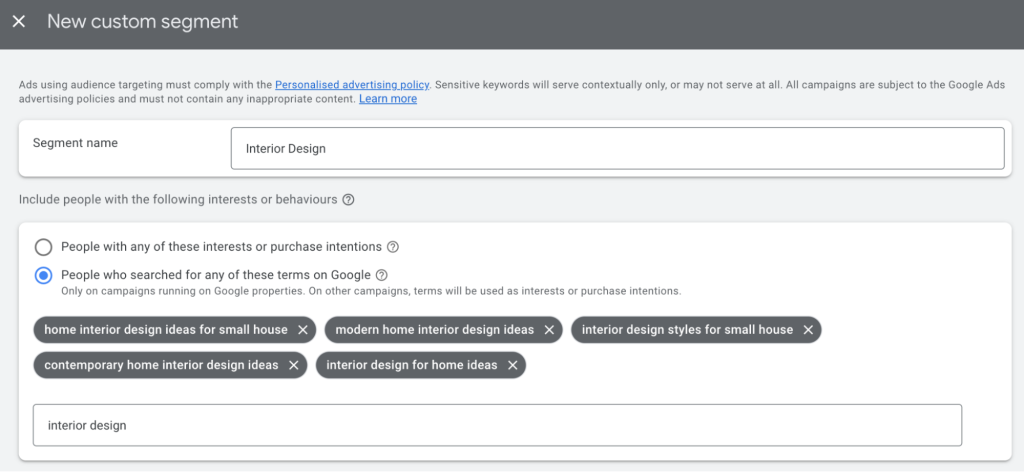
- Example: A SaaS provider can build a segment targeting users who recently visited competitor websites or searched for "CRM for small businesses."
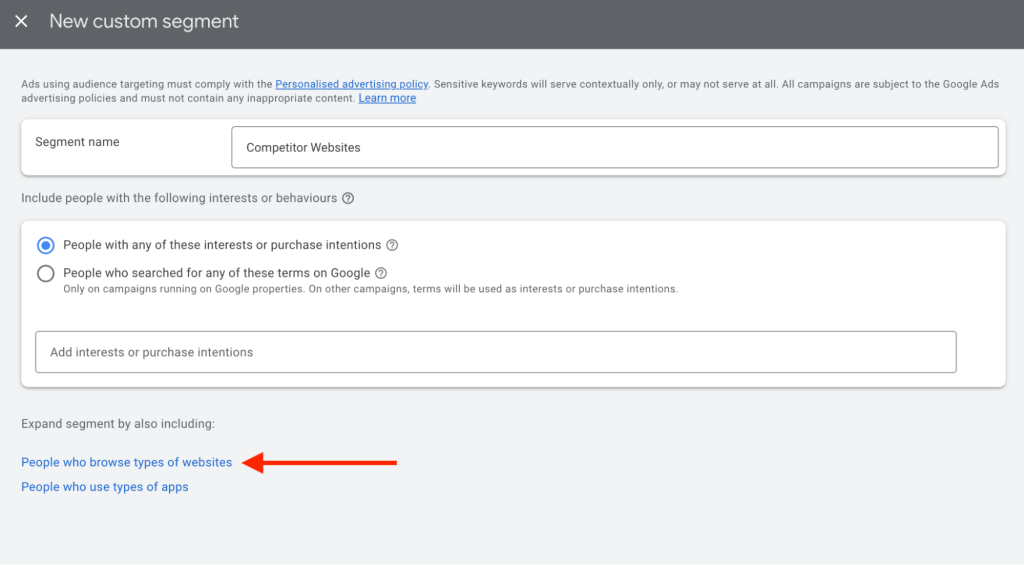
- Strategic benefit: This approach taps into mid- and bottom-funnel intent, enhancing targeting accuracy and boosting conversion potential.
3. Add Non-Converters to Guide Prospecting
This audience includes users who have shown interest but haven’t completed a conversion.
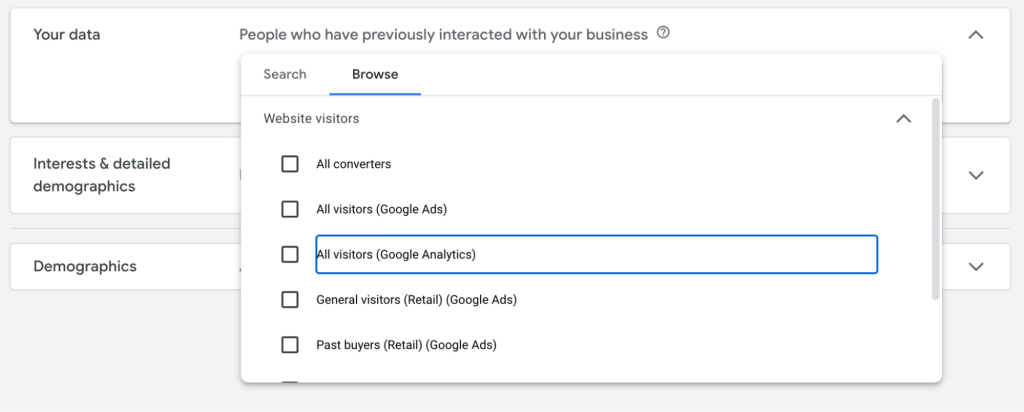
- Why it's valuable: These users are often early in the buying journey but have signaled potential interest. Targeting them facilitates nurturing and increases retargeting efficiency.
- Execution: Create a custom segment in Audience Manager for website visitors, add-to-carts, or video viewers who didn’t convert.
4. Leverage Converters to Build Lookalike Audiences
Your best customers are a goldmine of targeting insight. Feeding their profiles into Performance Max can uncover new high-potential audiences.
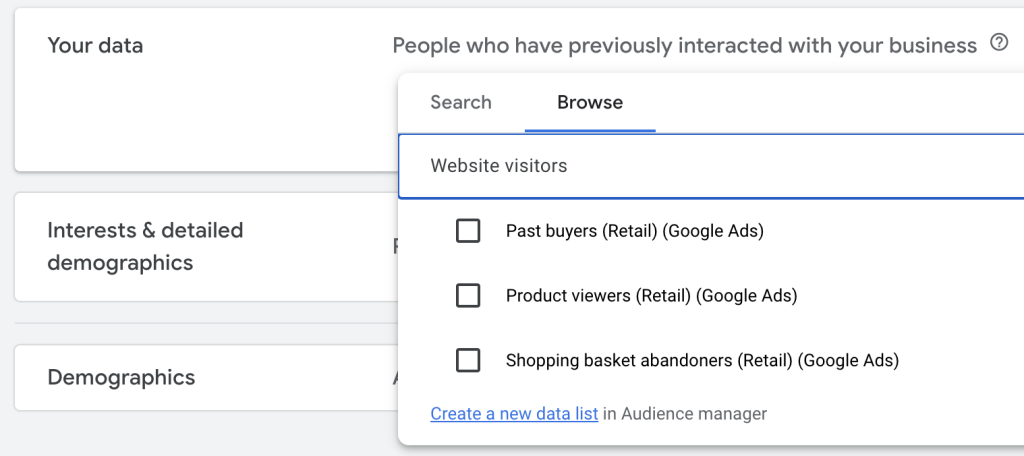
- How it works: Upload purchase history or customer match lists into Google Ads. Google’s machine learning will model new audiences that resemble your existing customers.
- Advanced tip: Use different converter lists for different product lines or services to improve granularity.
5. Enhance Campaign Precision with Demographics and Interests
Demographic layering adds an essential filter to ensure ads are served to users who meet business-defined qualifications.
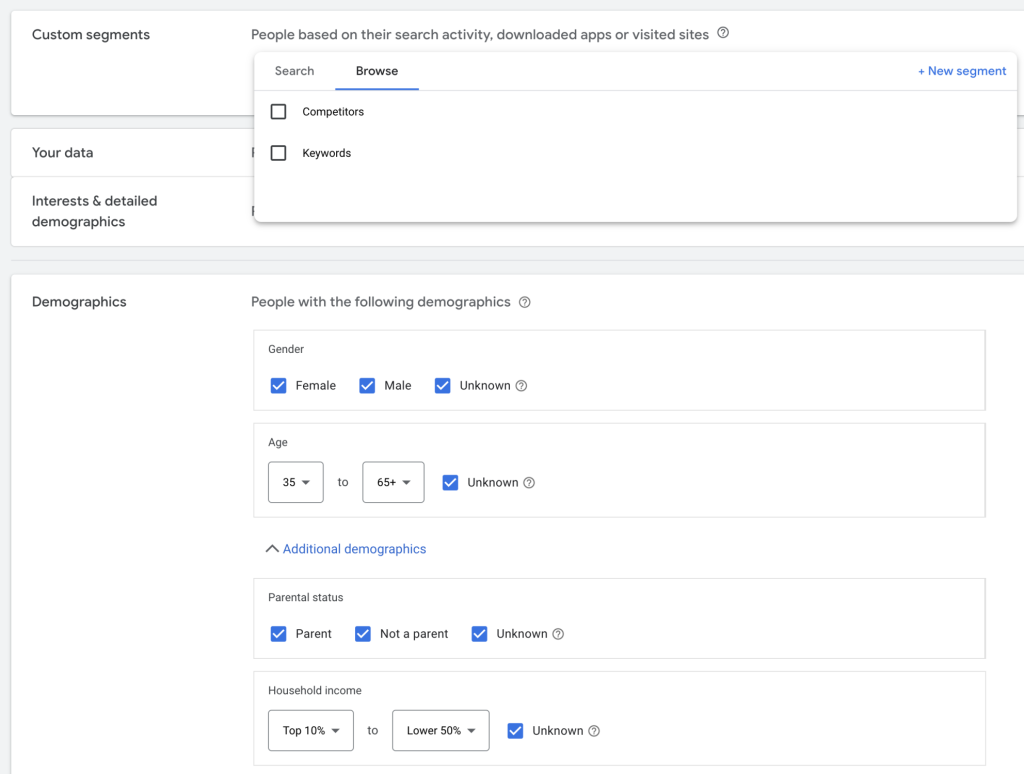
- Use case: A luxury brand may target users with household income in the top 10%, while a toy brand may focus on parents with children aged 3–8.
- Google’s segments: Utilize in-market, affinity, and life event categories to align campaigns with evolving user intent.
By treating audience signals as modular and measurable elements within your strategy, you can guide Google's automation with precision. The result is a campaign that learns faster, targets smarter, and performs better across every stage of the funnel.
Audience Strategy Across the Funnel
Mapping audience signals to the buyer journey ensures optimal content delivery at each stage.
| Funnel Stage | Recommended Audience Signal | Objective |
|---|---|---|
| Awareness | Affinity, Custom Interests | Build visibility and recognition |
| Consideration | In-Market, Custom Segments | Nurture engagement and comparison |
| Conversion | First-party Data, Converters | Drive transactions and retargeting |
Final Thoughts
Audience signals in Performance Max are far more than mere targeting tools; they are strategic levers that influence your campaign's trajectory. For marketing professionals, C-level executives, and business owners in Vietnam, this is a crucial component of digital advertising excellence.
When implemented thoughtfully, audience signals enhance Google’s automation with the power of human insight—guiding machine learning to prioritize quality, not just reach. As Performance Max continues to evolve, mastering audience signals will be a key differentiator between brands that scale efficiently and those that struggle with wasted ad spend.
Leverage your internal data, understand your audience behaviors, and refine your targeting continuously. Because in a data-driven world, the better your signals, the stronger your performance.





